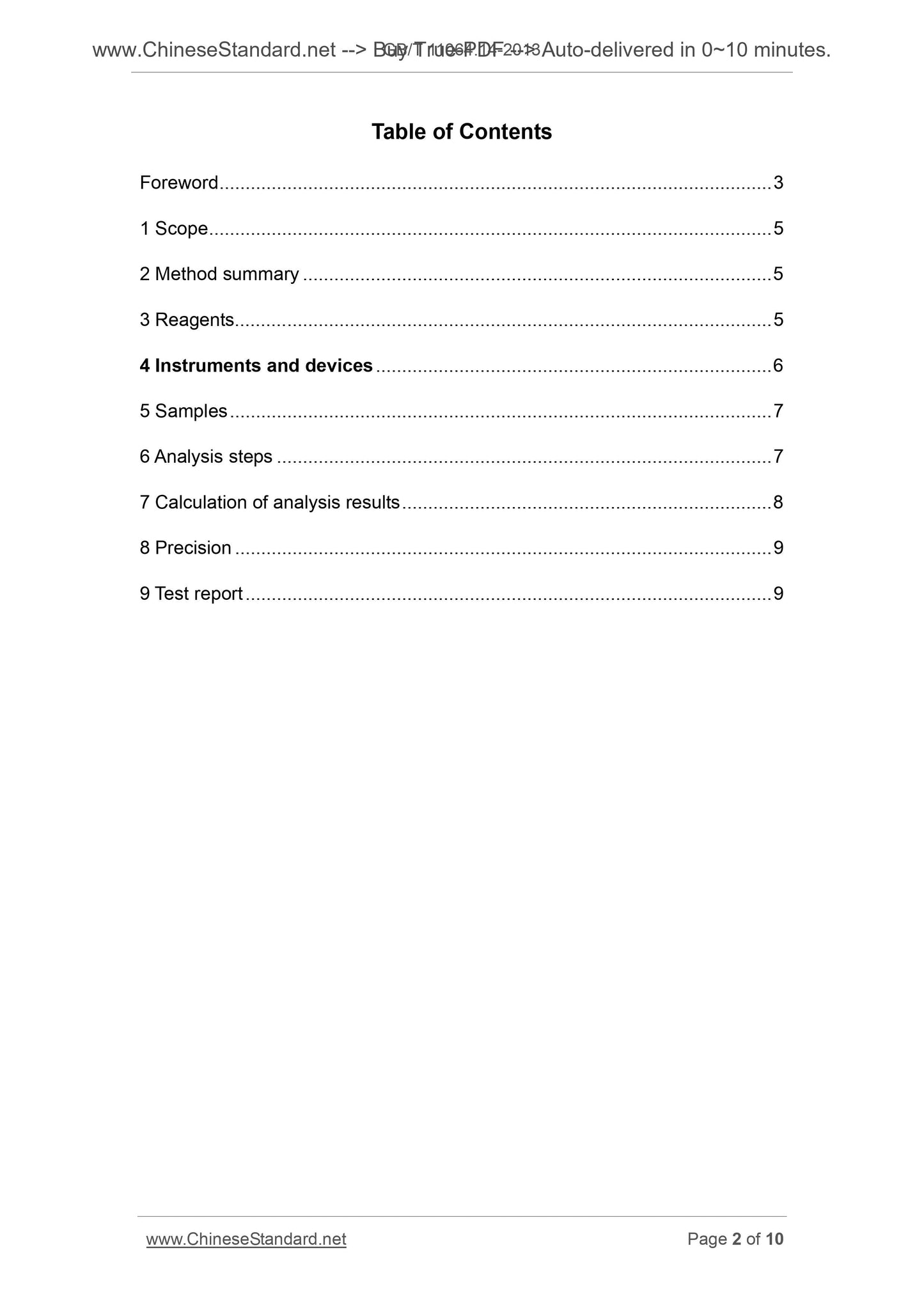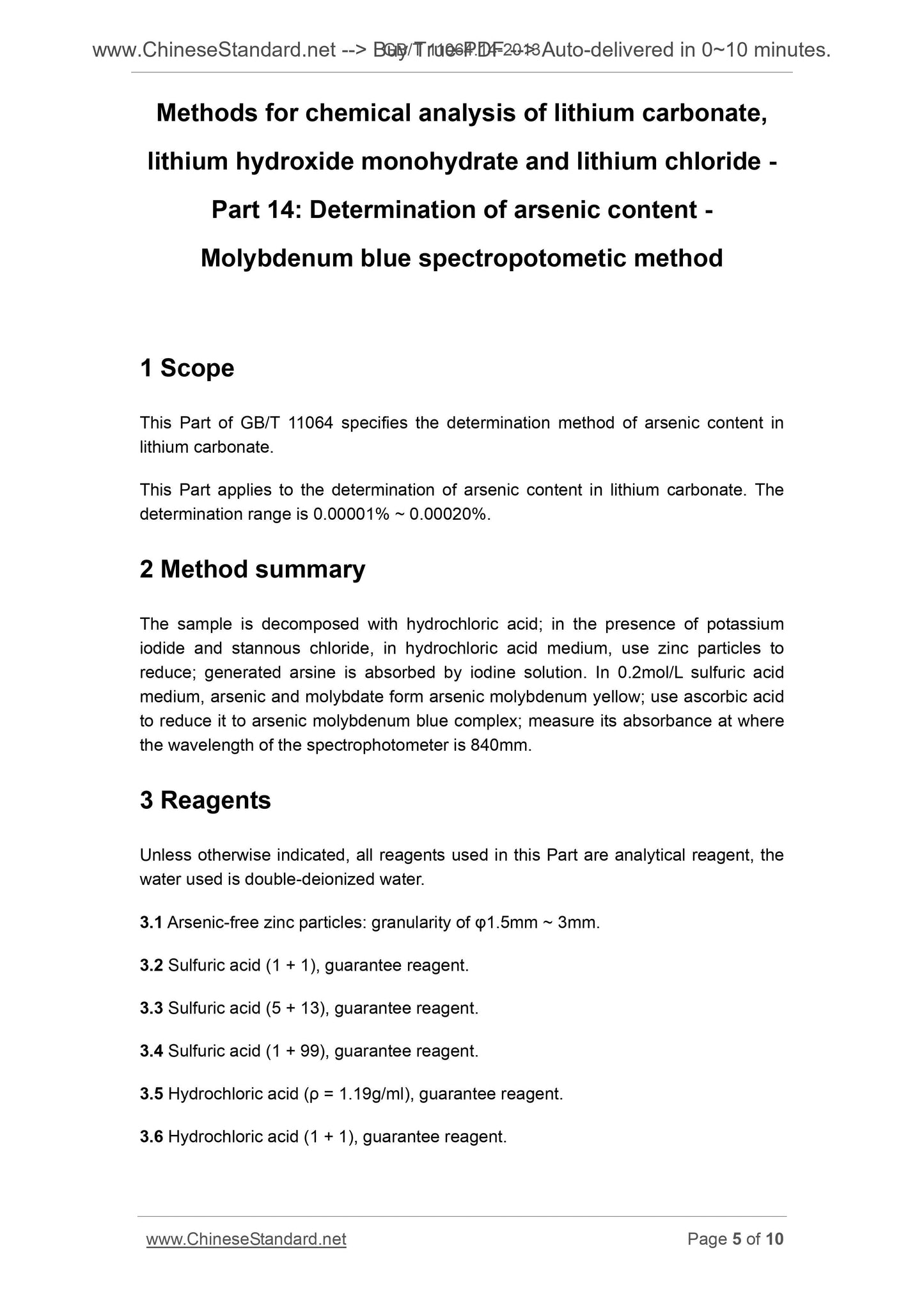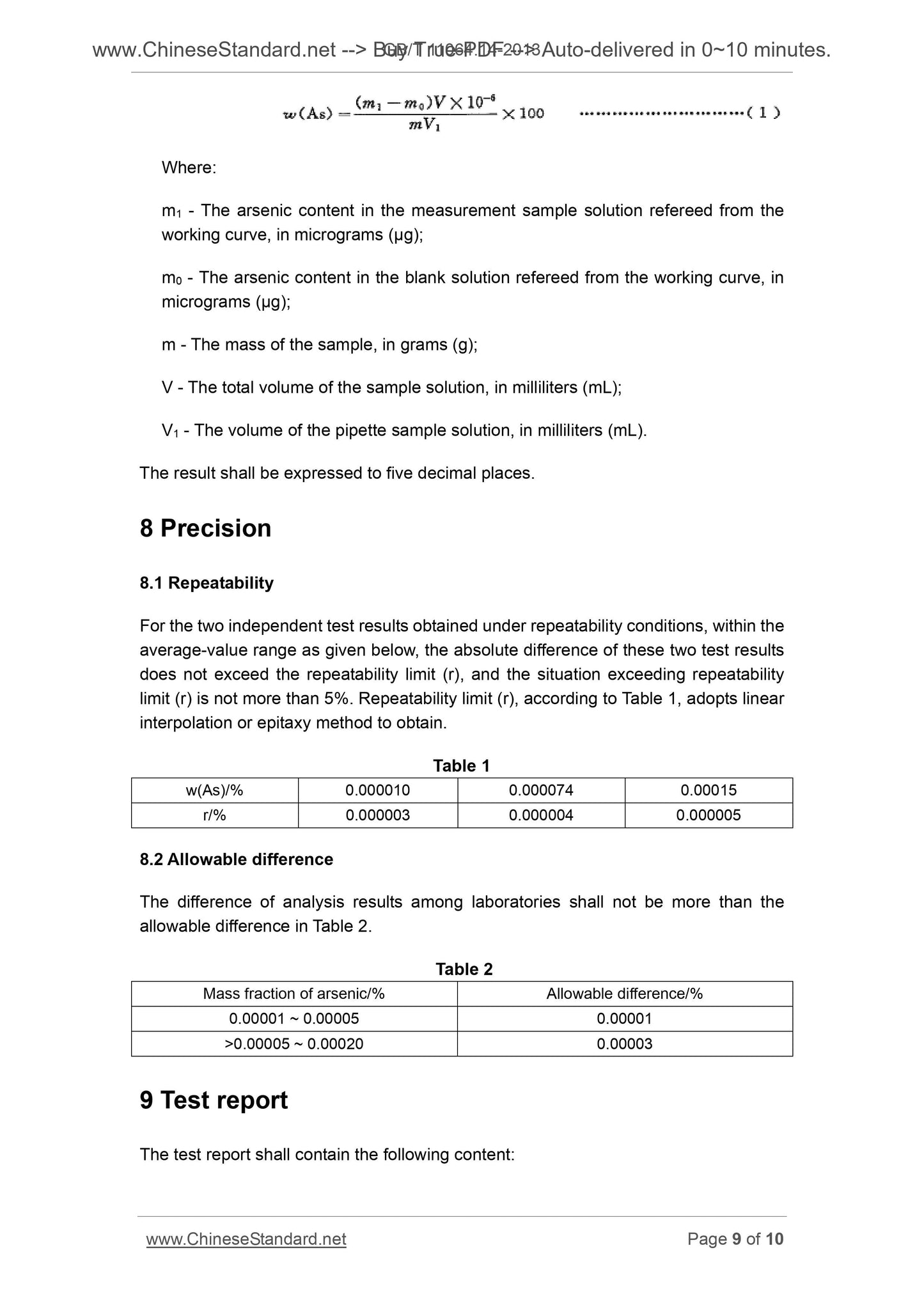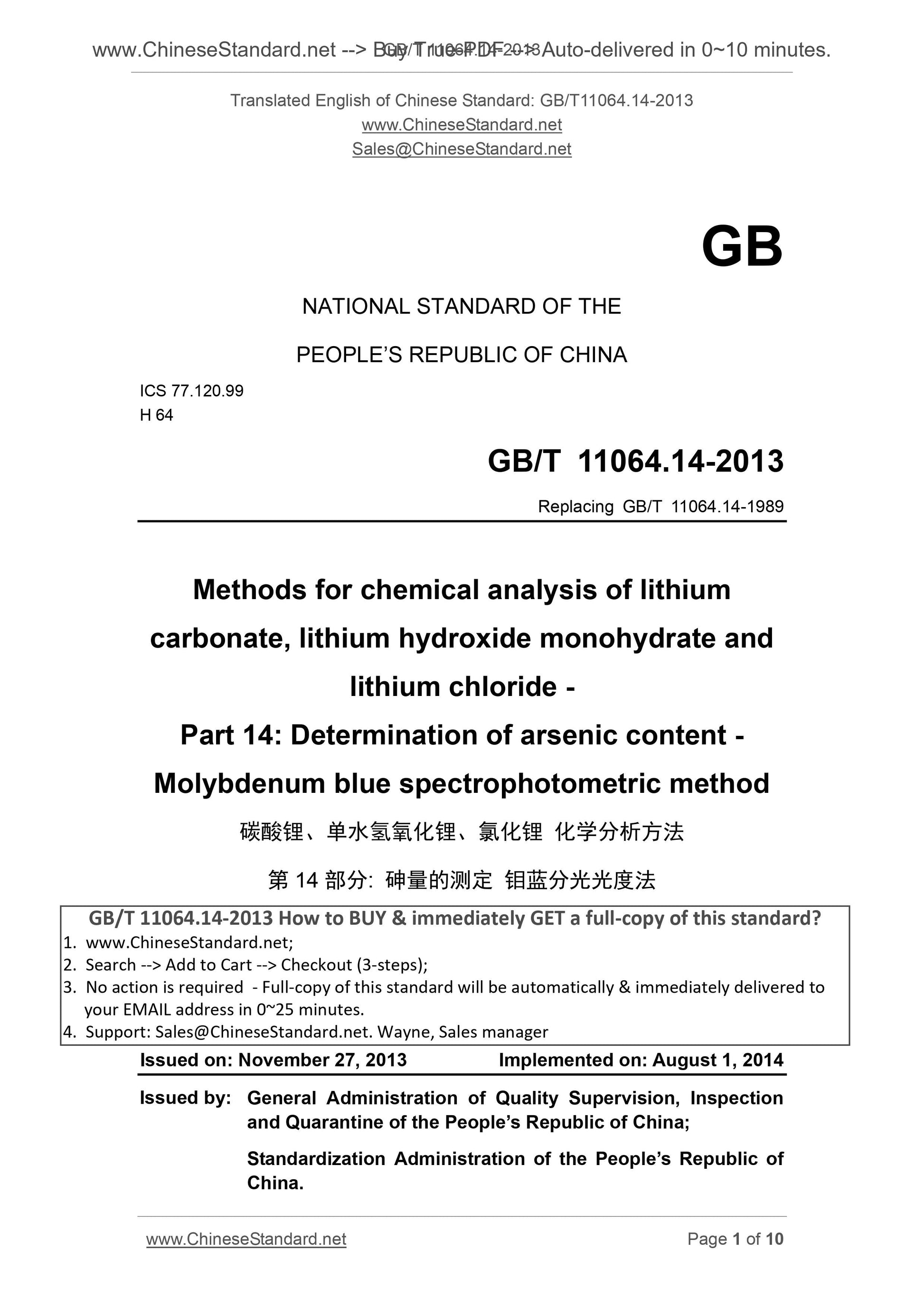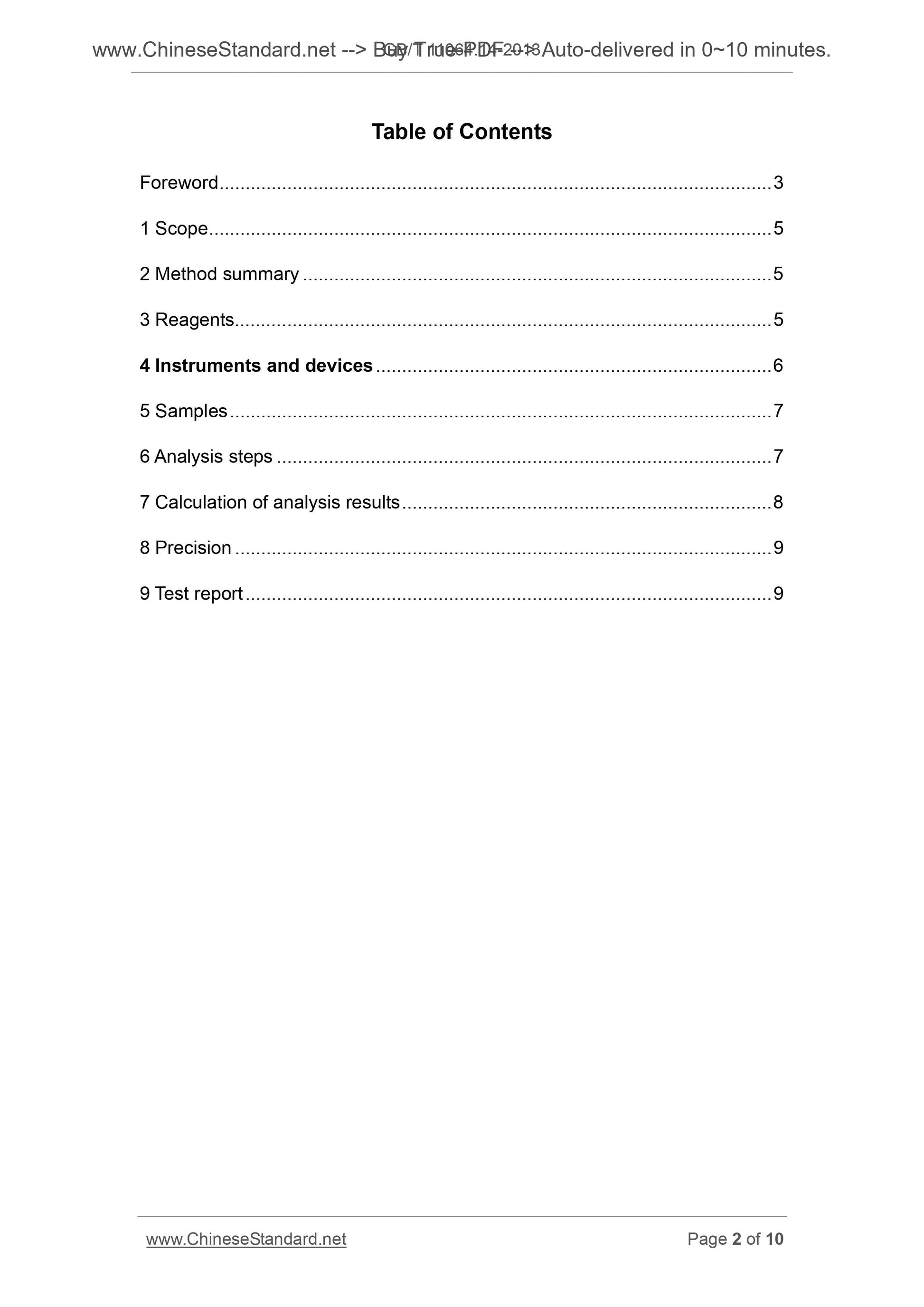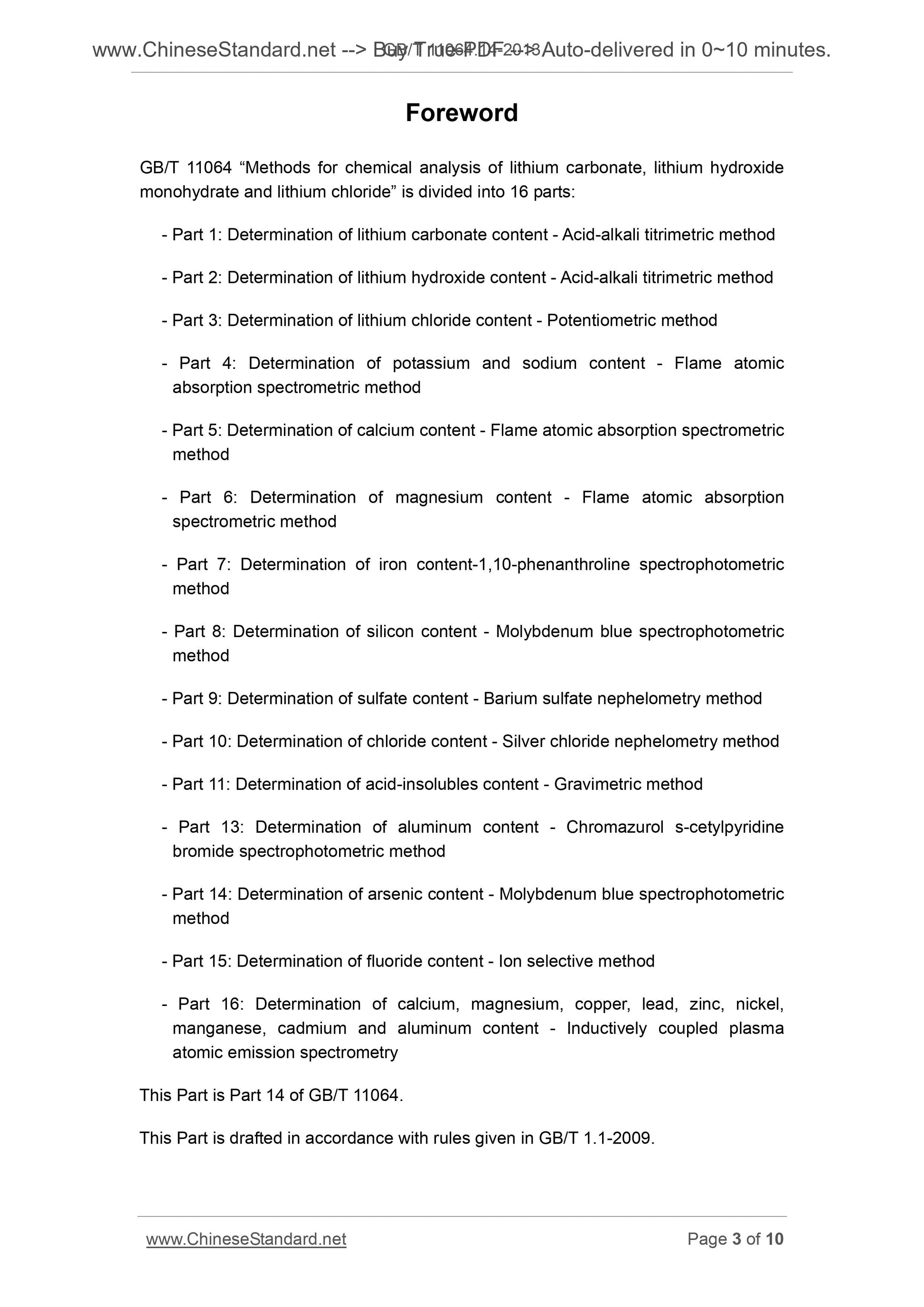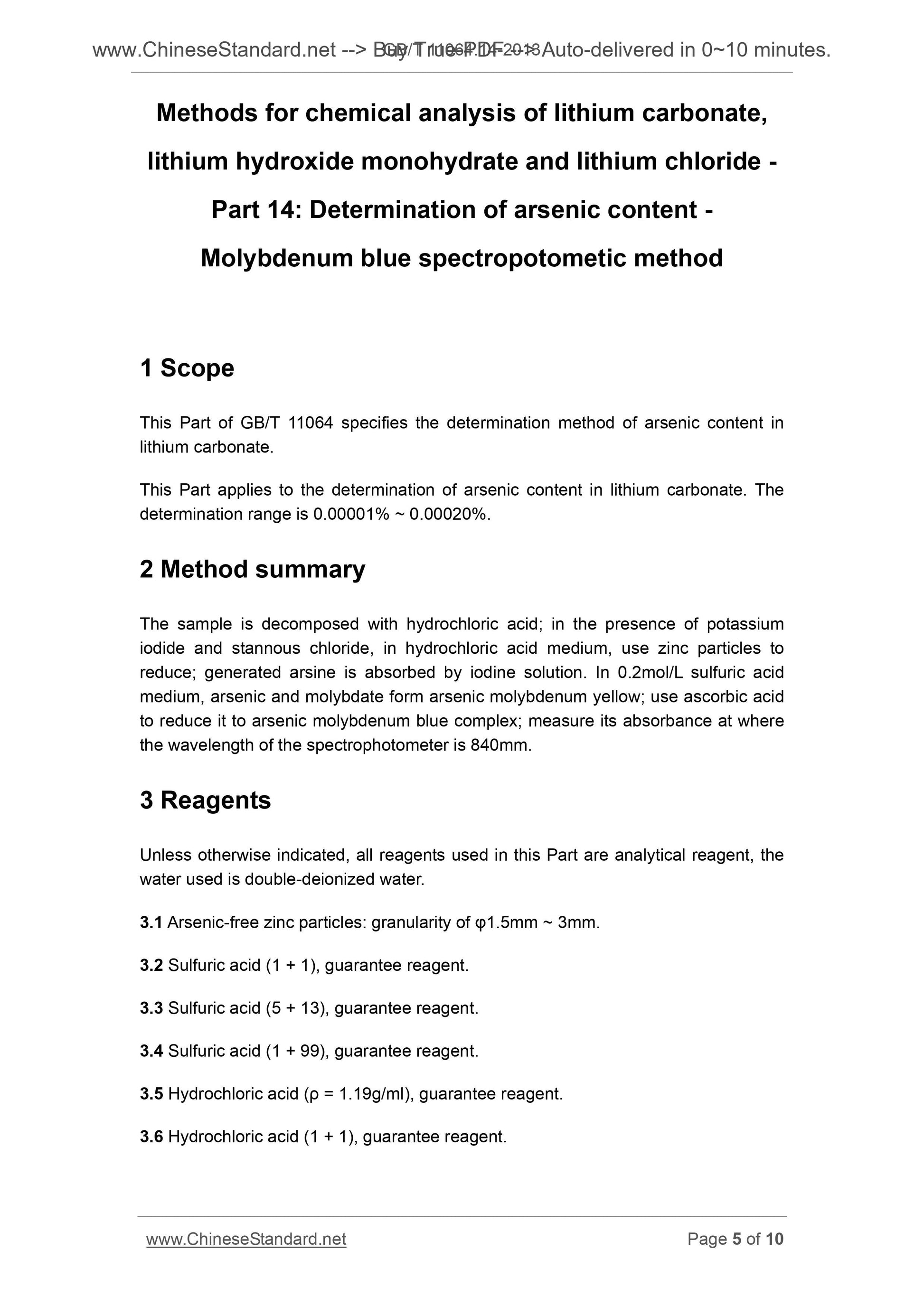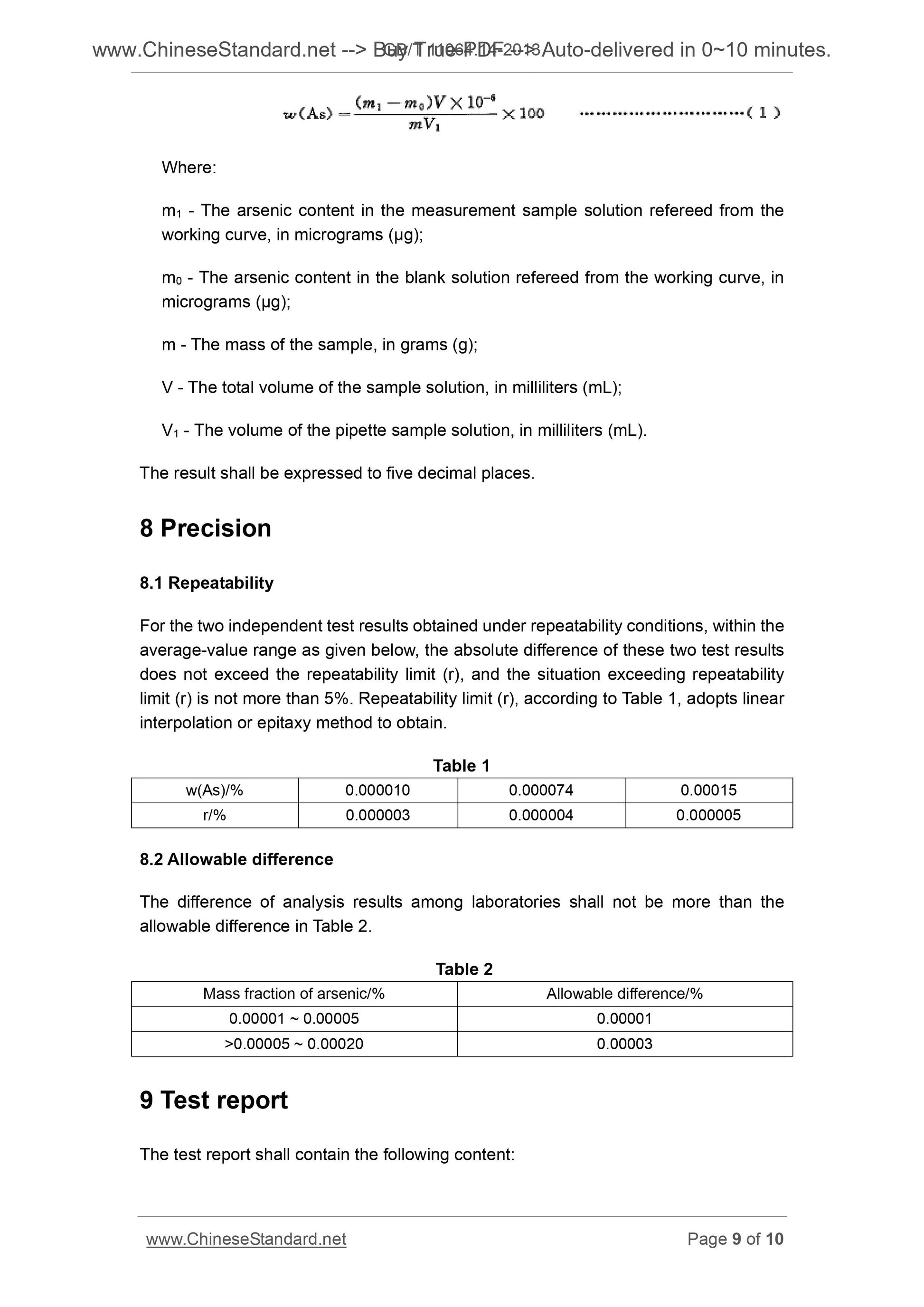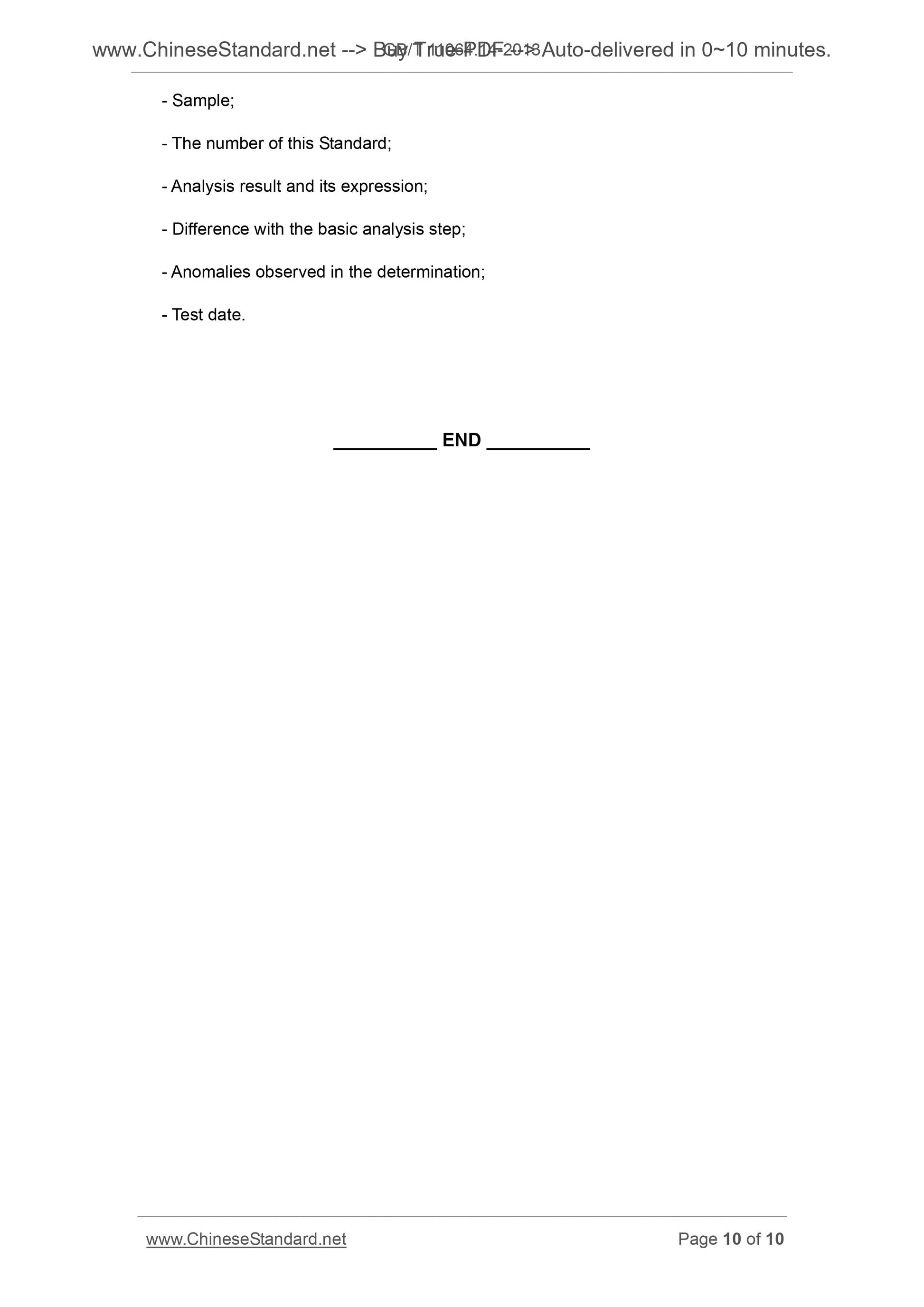1
/
of
6
www.ChineseStandard.us -- Field Test Asia Pte. Ltd.
GB/T 11064.14-2013 English PDF (GB/T11064.14-2013)
GB/T 11064.14-2013 English PDF (GB/T11064.14-2013)
Regular price
$95.00
Regular price
Sale price
$95.00
Unit price
/
per
Shipping calculated at checkout.
Couldn't load pickup availability
GB/T 11064.14-2013: Methods for chemical analysis of lithium carbonate, lithium hydroxide monohydrate and lithium chloride -- Part 14: Determination of arsenic content -- Molybdenum blue spectrophotometric method
Delivery: 9 seconds. Download (and Email) true-PDF + Invoice.Get Quotation: Click GB/T 11064.14-2013 (Self-service in 1-minute)
Newer / historical versions: GB/T 11064.14-2013
Preview True-PDF
Scope
This Part of GB/T 11064 specifies the determination method of arsenic content inlithium carbonate.
This Part applies to the determination of arsenic content in lithium carbonate. The
determination range is 0.00001% ~ 0.00020%.
Basic Data
| Standard ID | GB/T 11064.14-2013 (GB/T11064.14-2013) |
| Description (Translated English) | Methods for chemical analysis of lithium carbonate, lithium hydroxide monohydrate and lithium chloride -- Part 14: Determination of arsenic content -- Molybdenum blue spectrophotometric method |
| Sector / Industry | National Standard (Recommended) |
| Classification of Chinese Standard | H64 |
| Classification of International Standard | 77.120.99 |
| Word Count Estimation | 7,718 |
| Older Standard (superseded by this standard) | GB/T 11064.14-1989 |
| Regulation (derived from) | National Standards Bulletin 2013 No. 23 |
| Issuing agency(ies) | General Administration of Quality Supervision, Inspection and Quarantine of the People's Republic of China, Standardization Administration of the People's Republic of China |
| Summary | This standard specifies: Lithium Carbonate arsenic content determination. This standard applies to: the amount of lithium carbonate in arsenic determination. Measurement range of 0. 00, 01% -0. 00, 20 percent. |
Share

